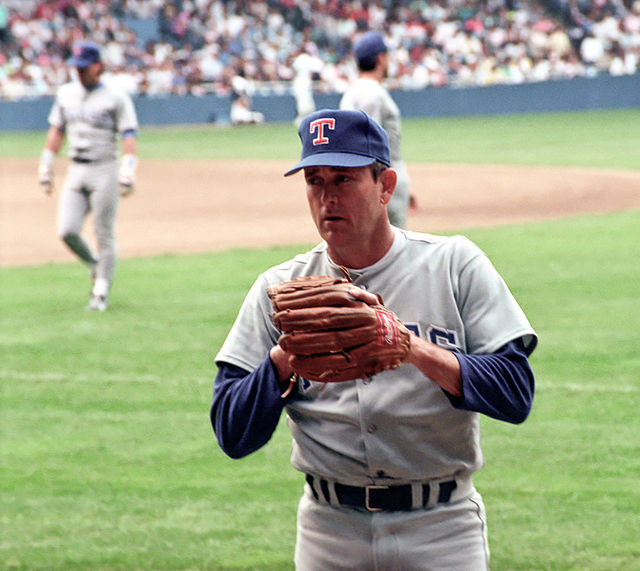Analytics have taken over the game of baseball. Home runs, strikeouts, and walks; the three true outcomes have been way more prevalent as this importance and reliance on analytics has taken over. With that comes a shift in the philosophy behind both hitting and pitching.
In the case for pitching, one of the maxims of this is the advocacy for all pitchers to throw hard. Optimize your arm strength and mechanics and fire a baseball 80-100 times because it’s all about velocity. The 2022 MLB season saw a total of 3,356 pitches registered in the triple digits. That was more triple-digit pitches than any other season in MLB history.
Turn on any game between any two teams and you’d be hard-pressed to find a guy who doesn’t come out of the bullpen throwing heat.
Just in the last few years have we seen plenty of pitchers boast cutters and sinkers in triple digits. For the longest time, it was just four-seam fastballs, and even back then it was seen very sparingly. Nolan Ryan was a complete outlier during his playing days.
Edward Cabrera, starter for the Miami Marlins, topped out at 95.5 mph on his changeup in his first career start a season ago. He threw 35 changeups in the start ranging between 93-95 mph on all of them.
Twins closer, Jhoan Duran, has routinely thrown sinkers at high velocities; some even registering in the triple digits.
21-year-old, Ben Joyce, former Tennesse Volunteer, was drafted by the Angels in 2022. He has routinely thrown pitchers in the triple digits and even touched 105.
Young pitchers are being developed at the early stages of their careers to lean into their ability to possess high-velocity pitches. Teams realize that even raw talent can be a massive resource, especially as late-inning, high-leverage relievers.
Long gone are the days of pitchers throwing north of 250 innings. Teams have figured out a way to “shorten” the games as they are able to send out two or three hard-throwing relievers making it tougher for the opposing offenses to score late.
Not only is it tough for opposing hitters, but the margin for error for pitchers with this ability is significantly higher because they are able to miss their location and still get away with it. It’s hard to hit in general, now these hitters have to hit 100 mph sinkers and cutters. The Greg Maddux and Jamie Moyer pitch-to-contact guys are not nearly as coveted nowadays.
This is all en vogue, but the idea of throwing a majority of pitches at triple-digit speeds is only going to increase the damage done to the arm. Even with the demand for these guys being as high as it’s ever been, there still comes a lot of risk and volatility.
The Pitch Clock Component
With MLB implementing new pitch clock rules at the beginning of the 2023 season, hitters and pitchers are forced to expedite their natural habits for the sake of speeding up the games.
While most of the public deem this tougher for hitters, this could be even tougher for pitchers because of what it’s going to do to their arms.
Before this legislation, pitchers were able to take as much time as they needed in between pitches. Thus, resulting in a more relaxed pace that allowed them to consistently rear back and “air it out.” While this isn’t completely obsolete, pitchers need to speed up their tempo, they are no longer on their own time.
This constant and incessant need to grab the ball and worry about beating the clock means pitchers won’t be able to wholly fine-tune every pitch they throw.
Prediction: The last two months of the season will see a major increase in run production as both starters and relievers will be fatigued.
It’s all a domino effect that major league organizations need to stay cognizant of. Starters get fatigued, relievers get fatigued, and September call-ups won’t bear the same results as the regulars.
Could this change the way pitchers are developed? Will teams massage their pitchers all throughout the season-long marathon? If 250+ innings eaters are gone, will we see an end to pitchers in the 180-200 inning range?
What Will Organizations Do? What if Offenses Adjust?
Organizations have been steadfast in this philosophy of pitching and how it’s geared to bring their team success. Numbers bear this out. Opponents’ batting average against these pitches is right around 200 over the course of the past seven years. The league batting average in 2022 was .243, with an OPS average of .706.
Teams are willing to take the risk because of how beneficial it is to house these pitchers. The big problem comes if or when opposing hitters start to adjust.
Hitters pick up on pitch shapes that come out of the pitcher’s arm at the release of the pitch. Even with sinkers and cutters at high velocities, eventually, the opposing hitters will become acclimated to what these pitches look like coming out of the arm.
Is it fair to assume that opponents’ batting averages against 100 mph pitches will elevate into the .220-230 range? More exposure will only benefit hitters.
Coupled with the pending realization that pitchers will become more prone to break down, organizations are going to have to answer a lot of questions and make a lot of decisions.
The pitch clock has added a whole new element to this sport, everyone involved with an organization needs to adjust accordingly.
Main Image: Bill Streicher-USA TODAY Sports



